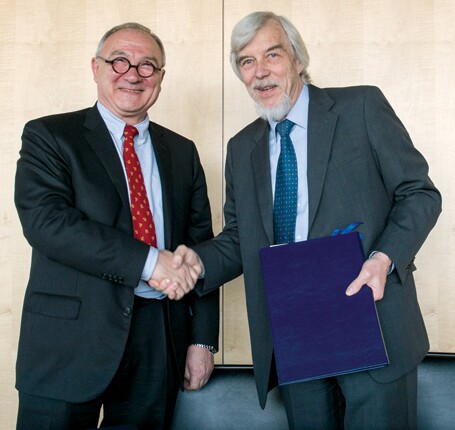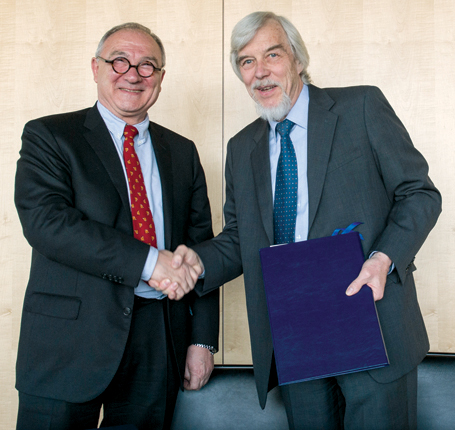ESA–CERN handshake
DOI: 10.1063/PT.3.2379
On 28 March, the European Space Agency (ESA) and CERN signed an agreement to foster collaborations in technology and research. Sergio Bertolucci, CERN director for research and computing, says the two agencies “are addressing the same set of questions”—ESA by looking at extremely large scales and CERN by looking at extremely small scales. As examples, he points to symmetries, gravitation, and the beginnings of the universe.

The European Space Agency’s Jean-Jacques Dordain (left) and CERN’s Rolf Heuer at the ceremony formalizing collaborations between the organizations they lead.
CERN

Areas of mutual interest include sophisticated simulations; handling big data; materials for applications in extreme conditions; and advances in microtechnologies, sensors, and detectors. The two organizations already collaborate. For instance, ESA uses CERN simulation software to test space-bound detector materials for radiation hardness. But such arrangements have been ad hoc, says Fabio Favata, who oversees the science program for the space agency. “Now the idea is to have a more coordinated approach.”
This year, ESA celebrates its half-century mark and CERN turns 60. Both were founded by the same vision, “to put Europe together with science,” says Bertolucci. “It’s slightly embarrassing that we’ve never had a formal agreement.”
More about the Authors
Toni Feder. tfeder@aip.org
